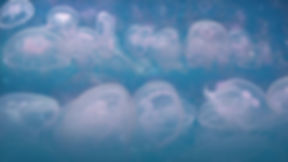Wildlife Conservation: working too well?

I recently saw what I thought to be a warm, fuzzy story about the increase in population of the grey seal in Cape Cod. The story made me smile for two reasons: who doesn’t love a grey furry seal? But more importantly, as a result of this seal explosion, the shark population has increased. Why? Due to the almighty food chain, sharks feed on seals. Considering sharks are the apex of the underwater ecosystem, one would assume shark and seal conservation efforts are equally important to their co-existence.
As I delved deeper into the internet what I found surprised me. Despite its importance, people tend to be reluctant when it comes to the conservation of any animal. As frightening as it may seem the reality is that all creatures, including sharks, play a crucial role on our planet. And more importantly, no matter how much or little, regulation is necessary to ensure survival of our ecosystem. Take the grey seal for example.

The cause of the seal explosion in Cape Cod and its surrounding islands is a result of the Marine Mammal Protection Act of 1972, which among other things, made the systematic killing of seals a federal crime. Previous to this act seal hunters were methodically wiping out the seal population to help preserve fishing stocks. Not an unreasonable act considering peoples livelihood and the fact that one needs to eat. Consequently, the seal population dropped to dangerously low levels. Then the Protection Act comes along, and with it: a seal explosion. The National Marine Fisheries Service estimates that nearly 16,000 seals now inhabit the Cape and Islands.
Today, seals are a problem once again … but for whom? In actuality, there are pros and cons to the explosion in population.
One problem: come to find out those cute, little, bright-eyed, furry seals are a bit disgusting. They poop everywhere creating a stench; the herd foul small freshwater ponds and trample habitats; and they invade beaches where visitors, by law, are not allowed to shoo them away.
In addition, seals are hungry! According to the National Marine Fisheries Service, grey seals consume between 4 and 6 percent of their weight per day. A mature male can weigh 800 pounds and up, which translates roughly into a daily diet of 32 to 48 pounds of seafood. This includes the kinds of fish—striped bass, bluefish, and cod —sought out by area fishermen and local restaurants.
Finally, where there are seals, there are sharks who take pleasure in grazing on the grey seal which is a superb high-calorie meal. Thanks to conservation efforts, sixty-eight great white sightings were reported in 2015, up from twenty-one in 2012 and only four in 2004, where previously entire seasons would often pass without any sightings at all. Unfortunately, the down side is that it has created an understandable fear among beachgoers to enter the water. Just last summer on Ballston Beach, in Truro, a great white bit a swimmer on the leg.
So what are the pros you might ask? After much reading, it doesn’t appear to be many: maybe a little seal watching. But for me the real value in seal conservation is the increase in the shark population.
This leaves us with a big picture question: “What is our role as humans when it comes to the population of anything?” For example, should culling (killing) of seals be an answer to overpopulation? It was before and evidently failed. Or should we step back and let nature take its course allowing the depopulation of our ocean fish?

A feasible answer to these questions is save the shark! The shark is the apex of the underwater food chain. If the role of sharks is to keep a healthy balance and to regulate the oceans, it needs to have its natural food source available. With the Marine Mammal Protection Act nature has flourished as seen in Cape Cod with the increase in seals and consequently, sharks. By allowing creatures to exist as they are intended, it will lead to a natural balance of our ocean ecosystem. With humans in the mix, conservation is vital to allowing sharks to exist in a natural state. You may be thinking, “But sharks are dangerous and a threat to humans.” They are, but only due to our own ignorance. Through education, conservation, and protection our earth’s natural creatures can co-exist with humans, including the mighty shark.




















